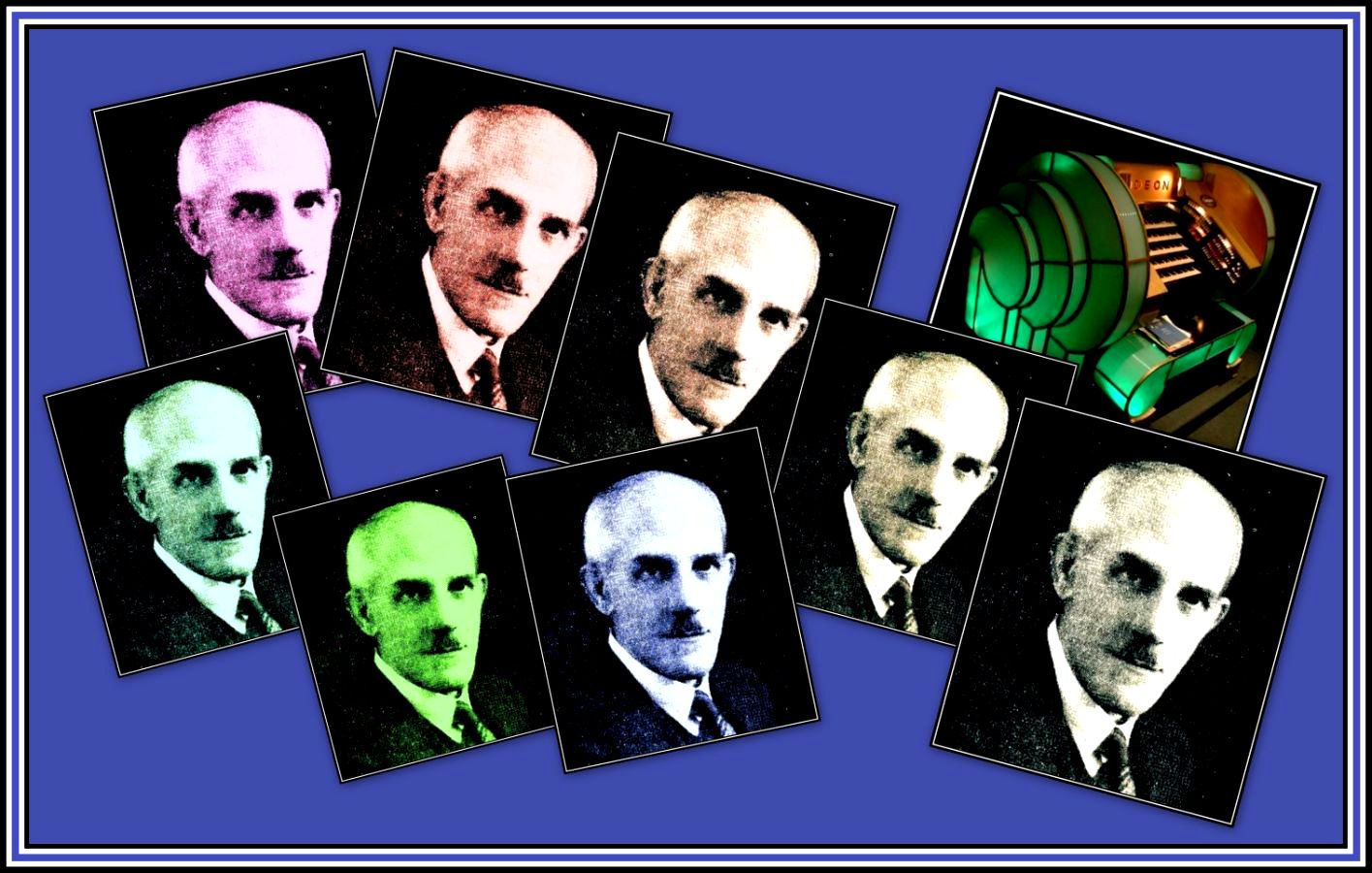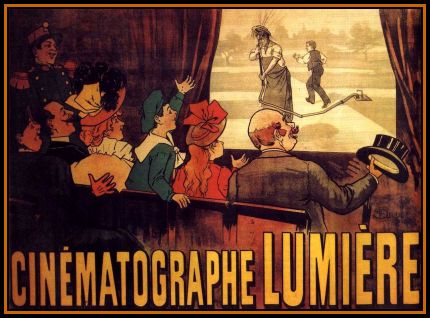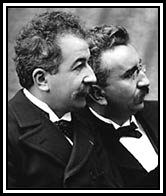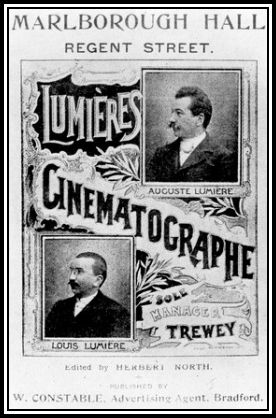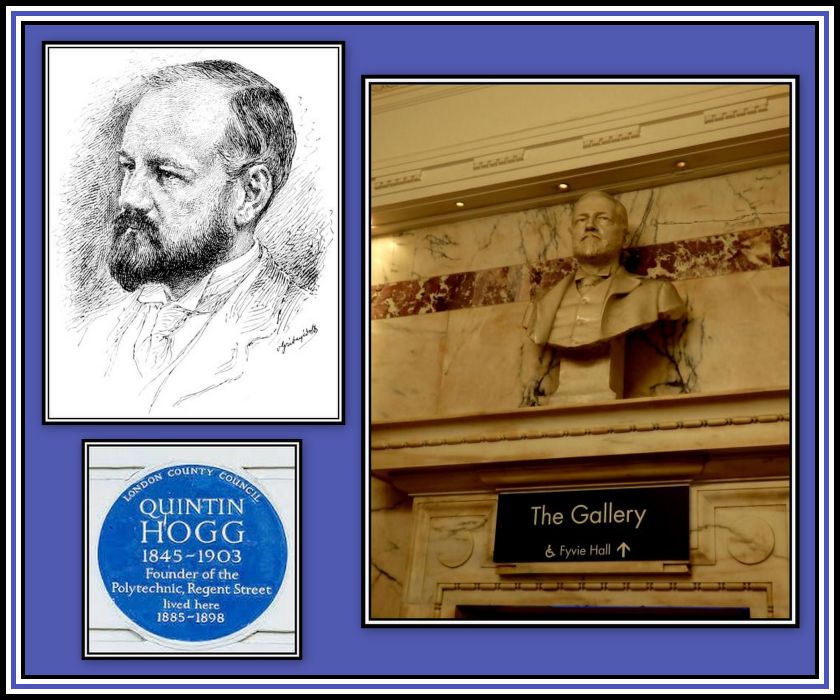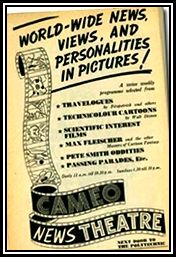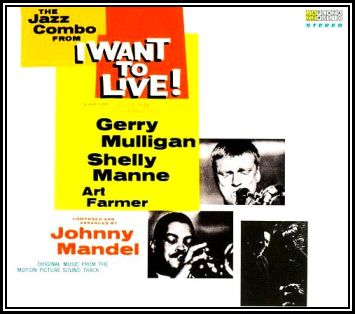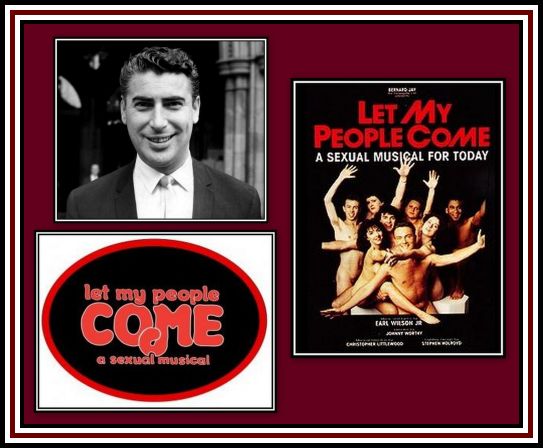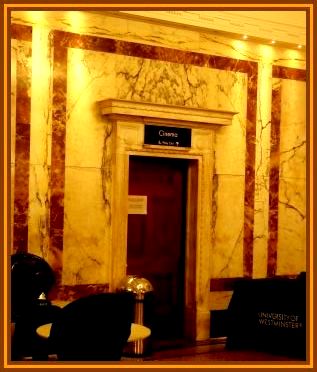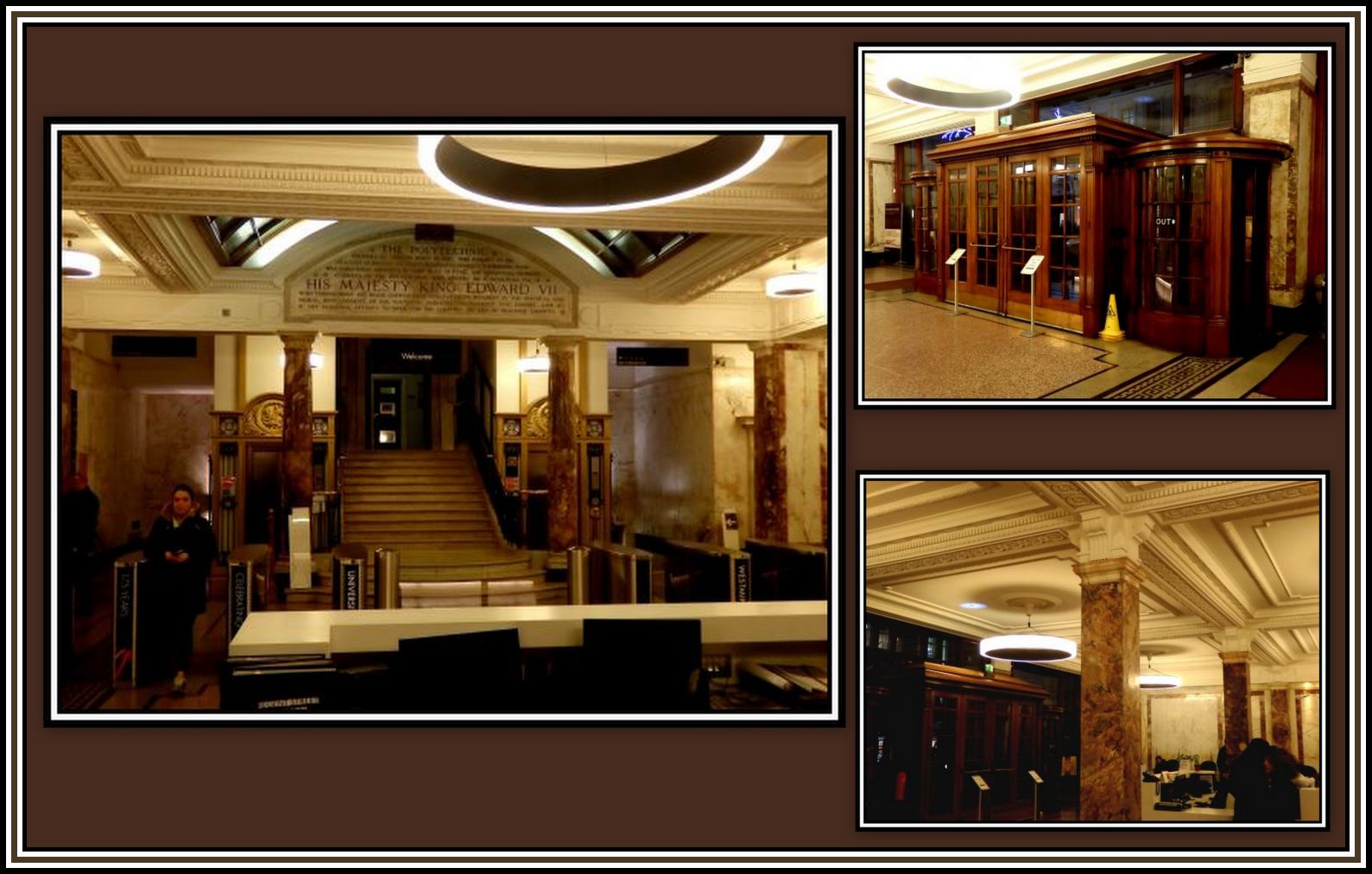THE THEATRE ORGAN
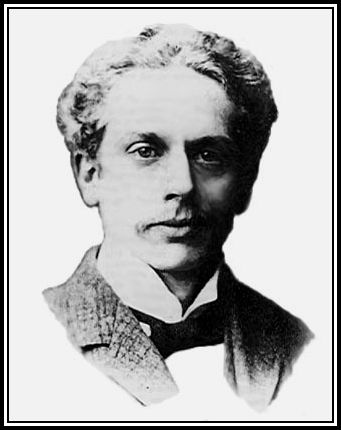 Robert Hope-Jones (1859-1914), Father of The Theatre Organ
Robert Hope-Jones (1859-1914), Father of The Theatre Organ
PART TWO: BUILDERS OF THE THEATRE ORGANS
THIS PAGE IS WRITTEN IN CONJUNCTION WITH GLEN TWAMLEY (FRIENDS OF BEER WURLITZER)
-oOo-
PAGE THIRTY-SEVEN:
THE COMPTON THEATRE ORGAN
SURVIVING
-oOo-
THE COMPTON ORGAN
OF THE CINEMA OF
THE CAMEO POLY IN UPPER REGENT STREET
-oOo-
THE BEAT LIVES ON
The site of the Cameo Poly Cinema at 309 Regent Street holds an important place in the history of British Film and also in the development of Higher Education for people of limited means.
-oOo-
In 1838, The Marlborough Rooms that had been built here became an educational institution and has since gone on to become one of the oldest in London. It was originally founded by Sir George Cayley (1773–1857; an aeronautical engineer), as the Royal Polytechnic Institution and was the first Polytechnic Institution in Britain. It was granted a Royal Charter in August 1839 with Prince Albert as patron.
-oOo-
In 1848, a theatre was added to the building to allow the presentation of Optical Shows and various demonstrations to the pubic. Large audiences soon began to attend these events and the site is now considered to be the world’s first permanent projection theatre. As a result of these Magic Lantern Shows presented, the theatre was chosen to be the site where, on the 21st February, 1896, Auguste (1862-1954) and Louis (1864-1948) Lumiere gave the first public performance of moving pictures in Britain.
Click here to watch the first films of the Lumiere Brothers including L’arrivée d’un train en gare de La Ciotat
There were apparently fifty-four patrons present in Marlborough Hall who had each paid one shilling to view the spectacle. The Lumiere Brothers had built and patented the Cinématographe, which was the first successful device to allow multiple viewers to see moving images at the same time. Following the demonstration, the theatre was converted into a cinema.
-oOo-
Unfortunately, the Institute ran into a number of difficulties and closed in 1881. The philanthropist Quintin Hogg (1845–1903) acquired the lease to the building in December 1881 and it continued to be used for educational purposes. In 1911, in response to the increased enrollment, the building was rebuilt using the plans of Frank T. Verity. Within the new building was the Marlborough Hall, which had designed by the architect George A. Mitchell.
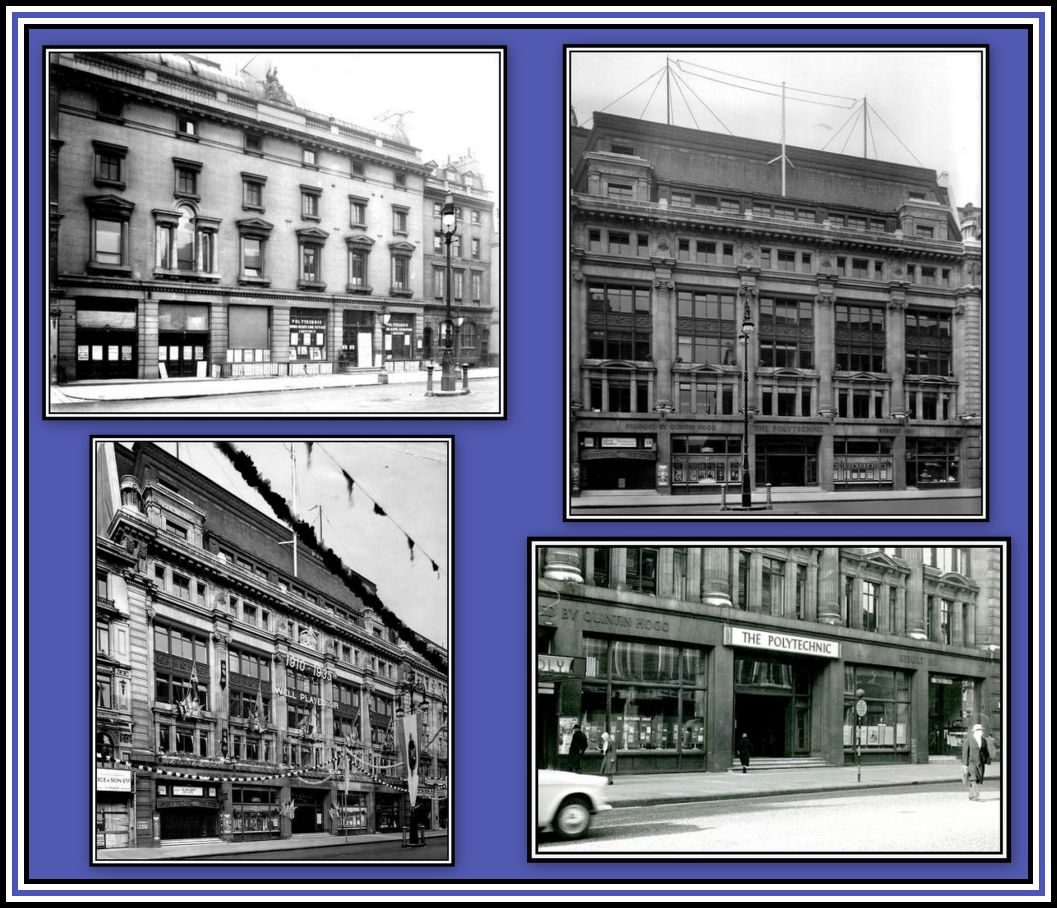 309 Regent Street through the years
309 Regent Street through the years
Top Left: in 1899; Top Right: in 1936; Bottom Left: in 1937; & Bottom Right: in the 1950s
Images courtesy of the University of Westminster Archive
Image courtesy of the University of Westminster Archive
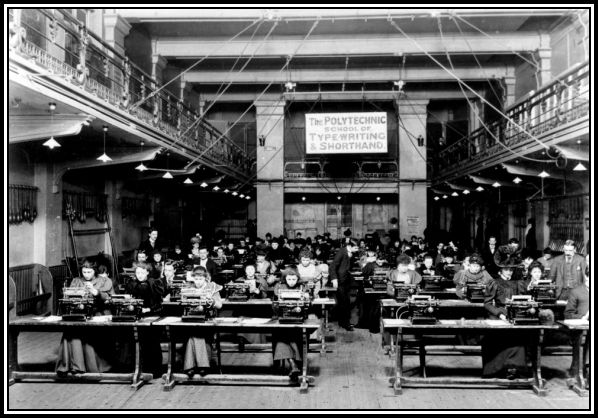 The Polytechnic School of Typewriting & Shorthand
The Polytechnic School of Typewriting & Shorthand
Image courtesy of the University of Westminster Archive
-oOo-
Over the years, the courses offered by the Institute/Polytechnic ranged from post-elementary school entry for craft and technical training at thirteen years of age to preparation for University of London External Degrees. In addition, the Institute was known by several other names: The Polytechnic at Regent Sreet and the Polytechnic of Central London (PCL). I remember that when I was applying to go to college in 1962, it was referred to as The Poly.
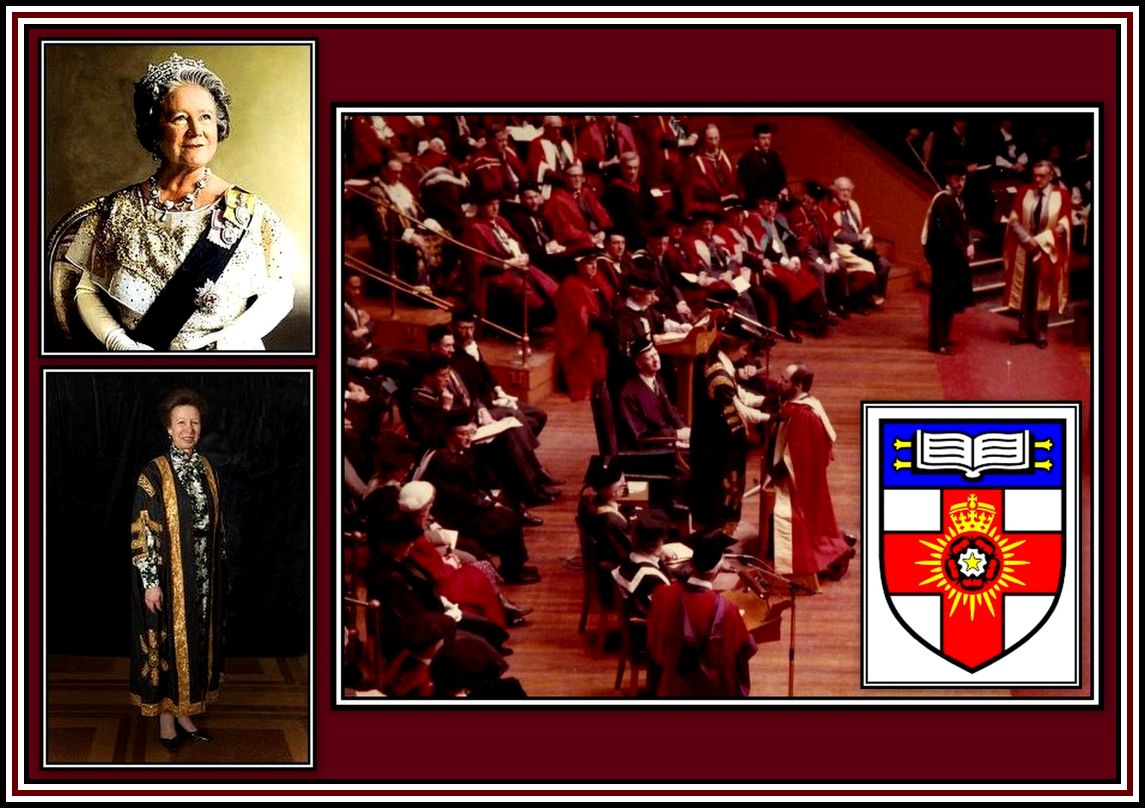 University of London Graduation at The Royal Albert Hall, 1985
University of London Graduation at The Royal Albert Hall, 1985
Top Left: Chancellor Queen Elizabeth, 1955-1980;. Bottom Left: Chancellor Princess Anne (1981-present)
In 1992, as a result of the Higher and Further Education Act, the PCL was re-designated as the University of Westminster.
-oOo-
Click here to tour the University of Westminster
Click here to see an Introduction to the University
-oOo-
Marlborough Hall opened as a public cinema in March 1912 with seating on one level only. In April 1923, the auditorium was re-fitted to seat patrons in the stalls and an added circle level and re-opened as the Polytechnic Theatre. Four years later it underwent further re-construction to the plans of architect F.J. Wills and it re-opened in March 1927 with a slightly reduced seating capacity.
In 1936 a Compton Theatre Organ with 2-manuals and 6-ranks was installed. The organ chamber was installed at the rear of the stage and is still present today.
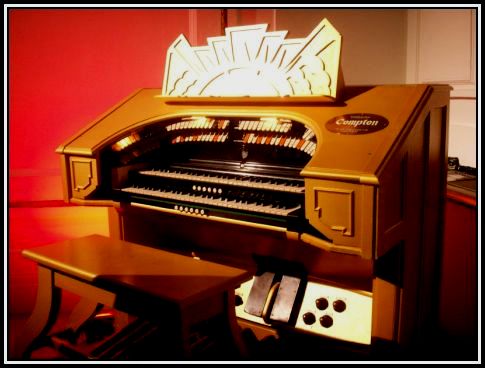 The Compton Theatre Organ of the Cameo-Poly Cinema
The Compton Theatre Organ of the Cameo-Poly Cinema
The Cinema was closed for several months in 1940, but when it re-opened later in the year, it was under the management of Clavering & Rose, who went on to operate seven Cameo Cinemas in London. The Cinema was opened as the Cameo News Theatre when Newsreels, short films and Cartoons formed the programme.
Image courtesy of the University of Westminster Archive
In 1947, it became the Cameo Continental Cinema and began screening foreign language films. Later in May 1952, it became the Cameo Polytechnic, but continued the policy to screen foreign language films.
-oOo-
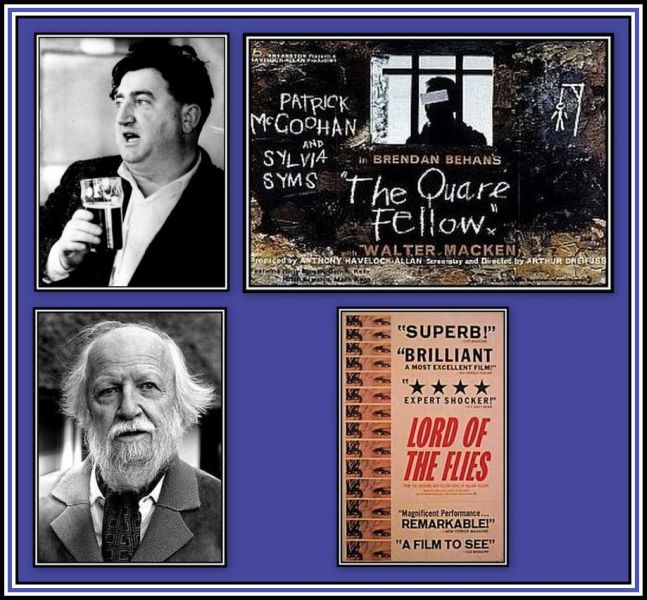 Top Left: Brendan Behan; Top Right: Poster of The Quare Fellow; Bottom Left: William Golding; & Bottom Right: Poster of The Lord of the Flies
Top Left: Brendan Behan; Top Right: Poster of The Quare Fellow; Bottom Left: William Golding; & Bottom Right: Poster of The Lord of the Flies
I remember going to the Cameo-Poly sometime in 1963, as it was commonly called by patrons, to see the film, The Quare Fellow, which was adapted from the play by Brendan Behan. I also remember seeing the film of William Golding‘s book, The Lord of the Flies, at the Cinema. Both films, neither a barrel of laughs, were extremely serious and intellectual, but were considered important, and were de rigueur for people like me and my friends at the time to see! We were very artsy and very, very serious with strong opinions on just about everything and were into modern jazz. I was especially into West Coast Jazz, which I still am today.
West Coast Jazz at its best – Frisco Club, from the soundtrack of the film, I want to Live (1958) with the score by Johnny Mandel and with instrumentalists, Gerry Mulligan, Shelly Manne, Art Farmer, Bud Shank, Frank Rosolino et al
Black Nightgrown, from the soundtrack of the film, I want to Live
Although we were a little too young to have been part of the original Beat scene and to be real Beatniks, we certainly embraced its ideals, anti-materialism, counter cultural & soul searching, and continued to do so regardless of age and later responsibilities. Like some, I consider Beat to include a spiritual meaning amongst others and believe that it is a shortened form of Beatitude.
-oOo-
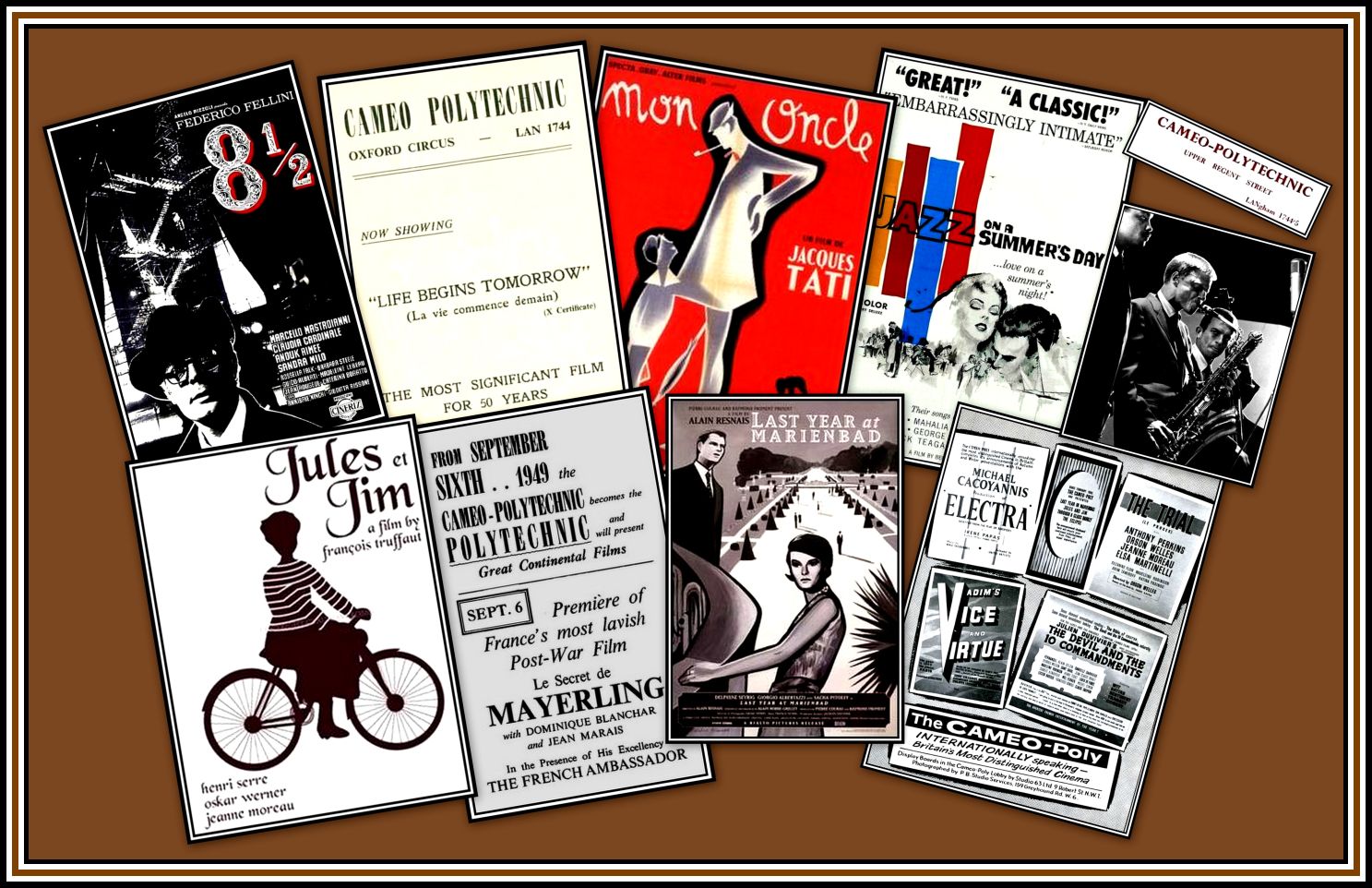 Films Shown at the Cameo Poly Cinema
Films Shown at the Cameo Poly Cinema
Images of Life Begins Tomorrow, Mayerling & and the collective poster (bottom right) appear by courtesy of the University of Westminster Archive
-oOo-
The Cinema was taken over by the Classic Cinema Chain in 1967 and underwent another name change to the Classic Poly Cinema. Sadly, it closed in April 1972, as a result of difficulties in obtaining programming.
The Cinema was next changed back into a theatre following its acquisition by the impressario, Larry Parnes (1930-1989) who re-opened it as the Regent Theatre. Perhaps the longest running production at the Theatre was the sex musical, Let My People Come.
In December 1978, it once again became a Cinema and was renamed the Regent Poly Cinema. However in January 1979, it was re-named once more, as the Classic-Poly Cinema. Unfortunately, nothing was able to halt the decline in cinema-going prevalent at the time and the Cinema closed on the 12th April, 1980.
The auditorium reverted back to the Polytechnic of Central London (PCL) and was used as a lecture hall and performance space. The canopy over the former Cinema entrance was removed and the foyer was used as a storage area. Today, entry to the auditorium is via the main original Polytechnic entrance doors and then through a side door in the foyer.
In 2007, The Compton Theatre Organ was restored by HWS Associates with the Console being stored at the rear of the stage. The Organ was played in 2008 and at the London Open Day of 2014.
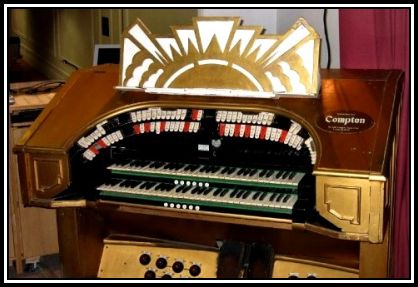 Reproduced from Cinema Organs
Reproduced from Cinema Organs
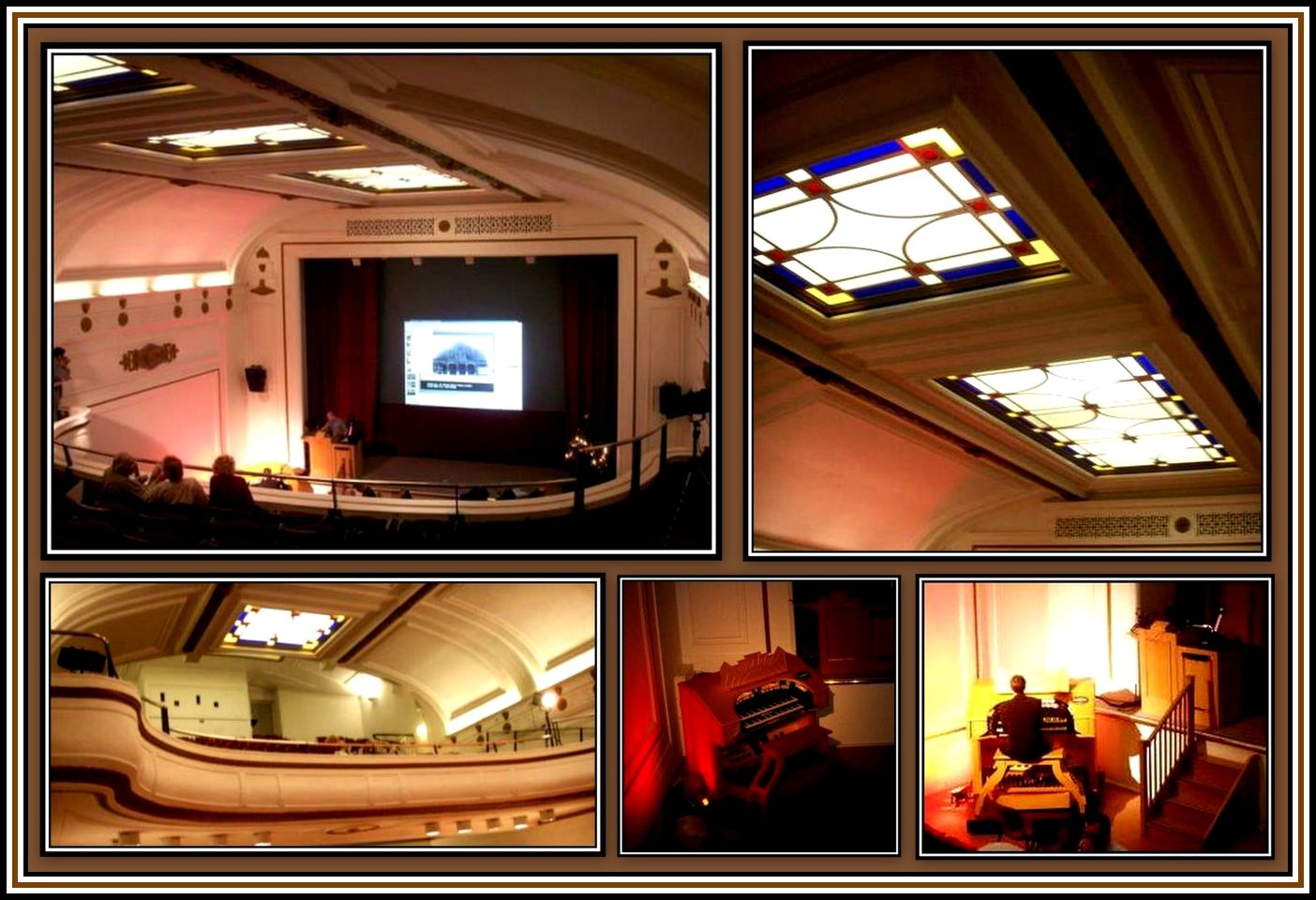 The Auditorium in December 2008 – Photographs are reproduced from Cinema Treasures
The Auditorium in December 2008 – Photographs are reproduced from Cinema Treasures
In 2010, plans were drawn up to return the building to a Cinema where both films and student presentations will be presented and open to the public. The restoration is being undertaken under the banner of The Regent Street Cinema Project with the Circle to be extended towards the stage to produce a Stadium seating arrangement. The Cinema is to be known as the Regent Street Cinema and is hoped to be opened in 2015.
-oOo-
THE UNIVERSITY OF WESTMINSTER, DECEMBER 2014
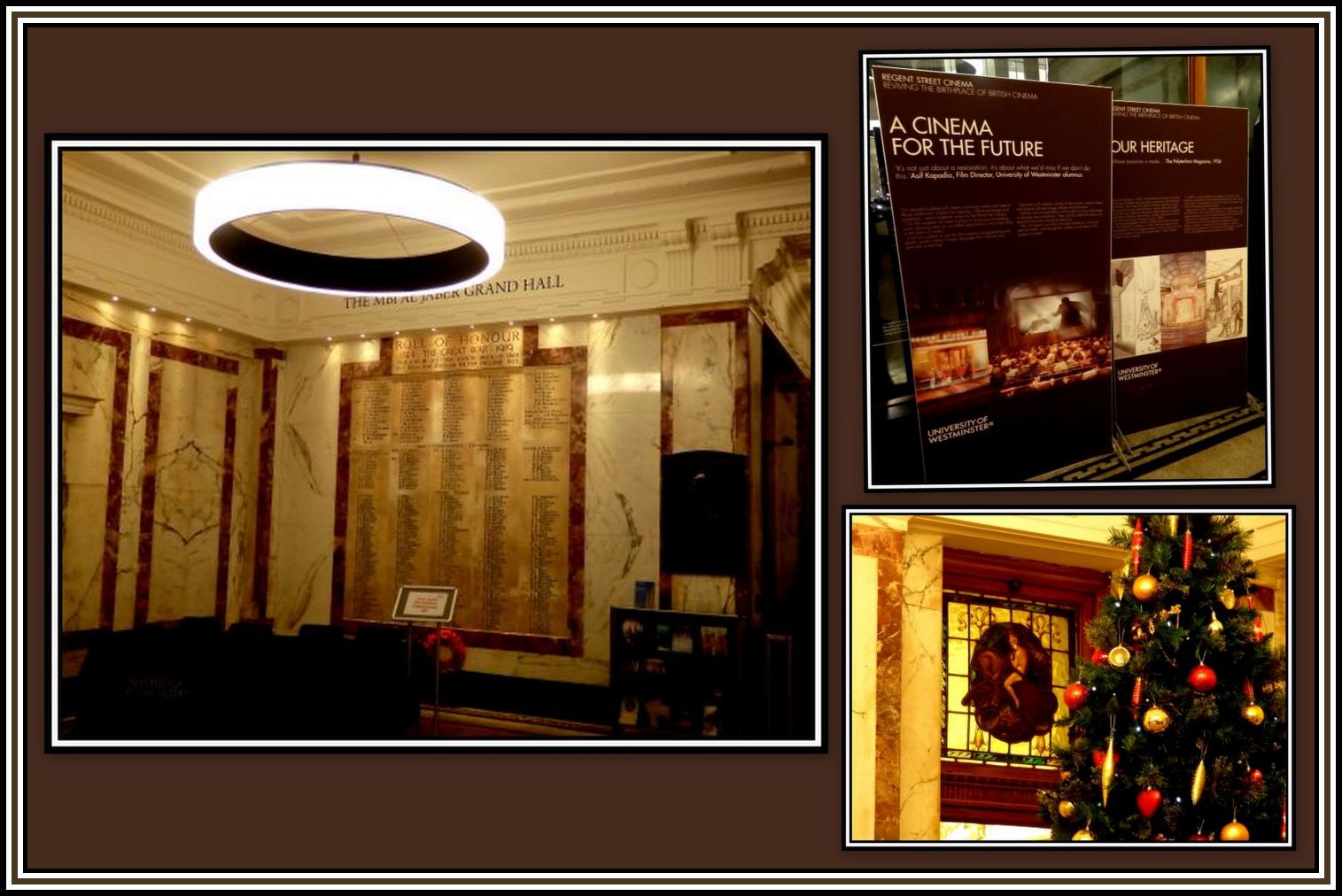 The Foyer II – War Memorial
The Foyer II – War Memorial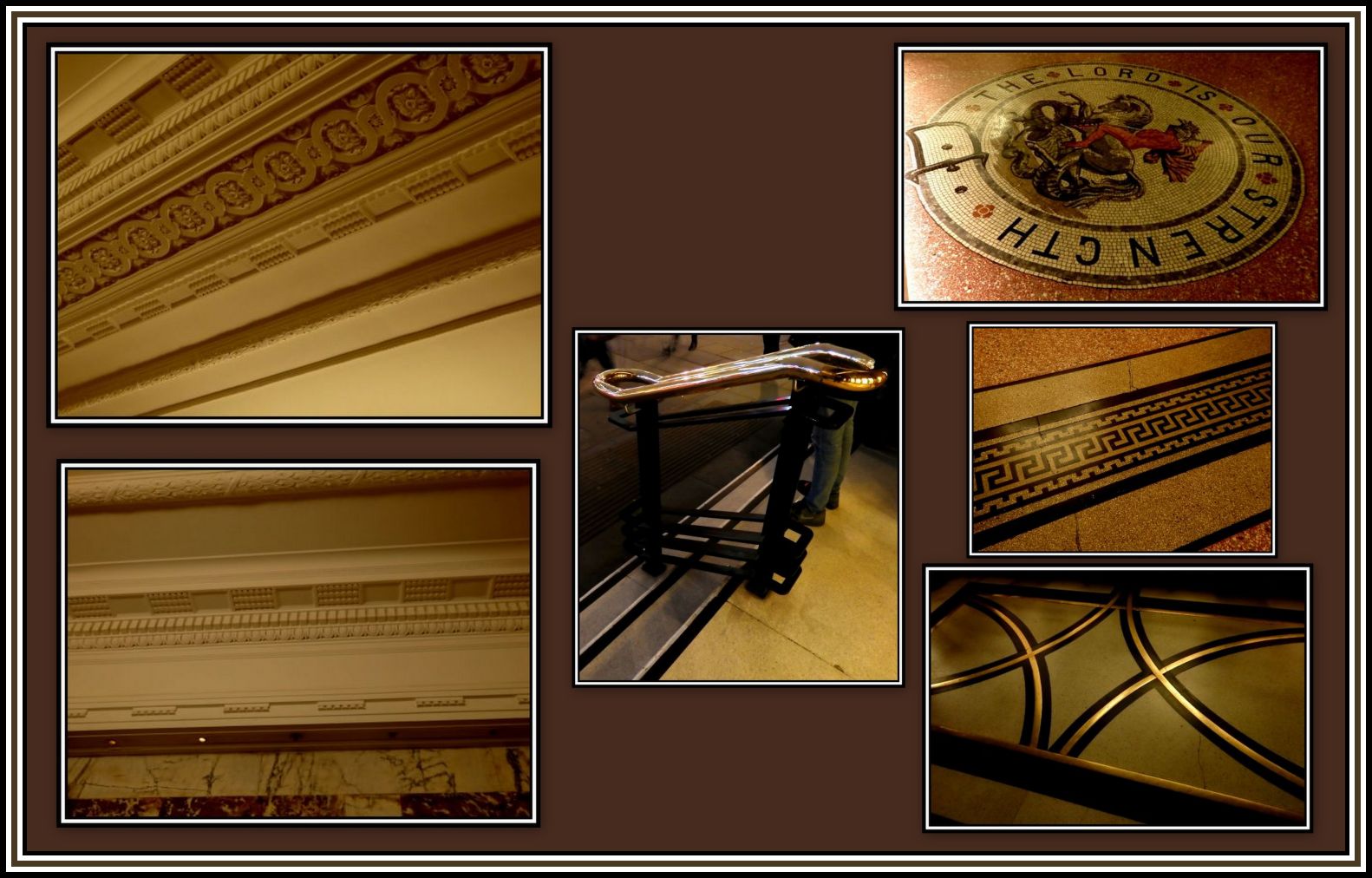 The Foyer III – Ceiling, Floor and Rail
The Foyer III – Ceiling, Floor and Rail
-oOo-
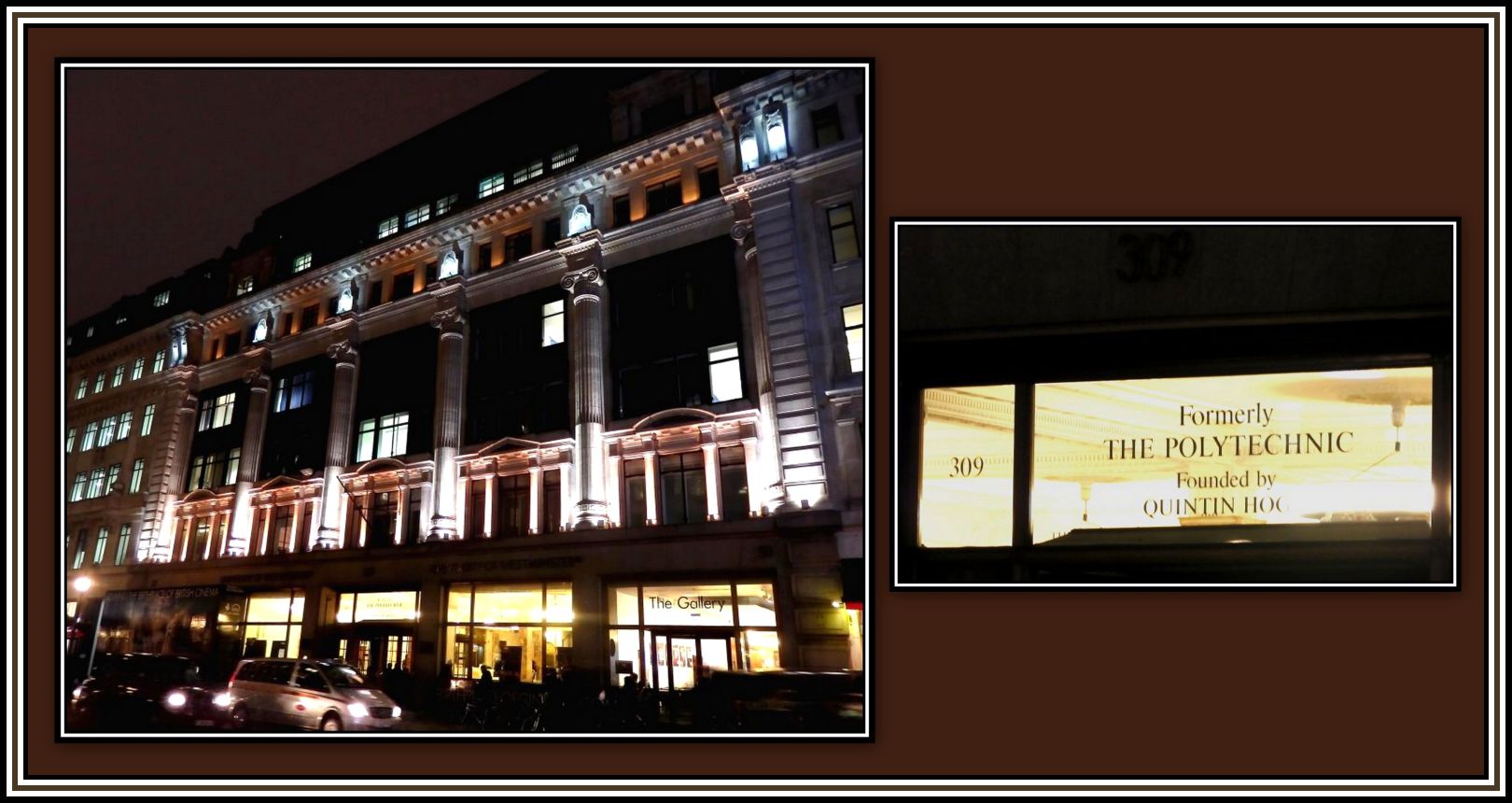 The Exterior of the University of Westminster, Upper Regent Street Campus – December 2014
The Exterior of the University of Westminster, Upper Regent Street Campus – December 2014
——oooOOOooo——
ACKNOWLEDGEMENTS
I would like to thank Mr. Ian McIver for providing information and photographs. I would also like to thank Mr. Stephen Dutfield for allowing the reproduction of some photographs from The Compton List here and for the information provided there.
I would also like to thank University of Westminster Archive for allowing the reproduction of several posters.
Many thanks are due to Mr. Paul Bland for his help and encouragement during the writing of this piece; I also would like to thank him for the information that he has provided and for the photographs that he graciously allowed to be reproduced here.
——oooOOOooo——
——oooOOOooo——
——oooOOOooo——
Click here to return to PART ONE: INTRODUCTION TO THE ORGAN
——oooOOOooo——
Click here to return to PART TWO: THE THEATRE ORGAN HOME PAGE
——oooOOOooo——
Click here to go to the TABLE OF CONTENTS
——oooOOOooo—-

